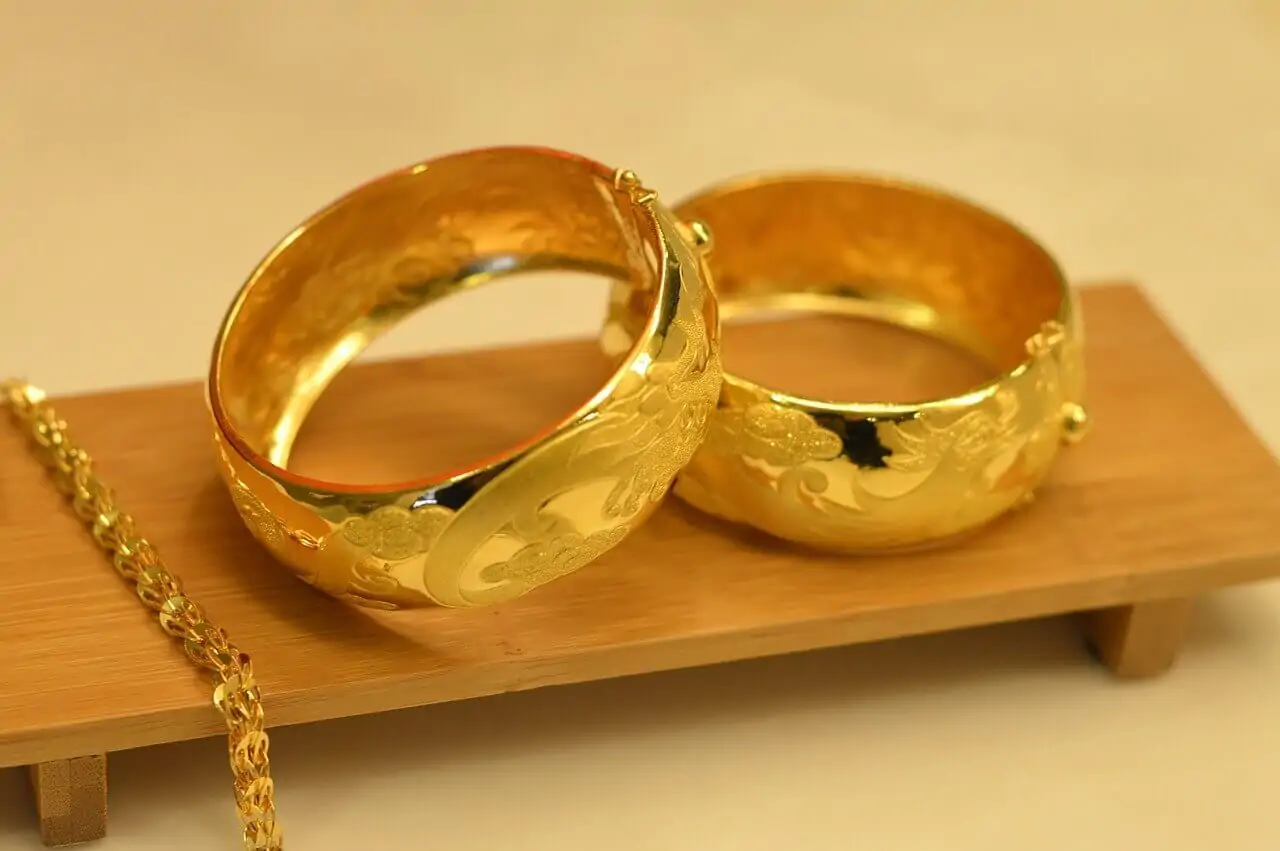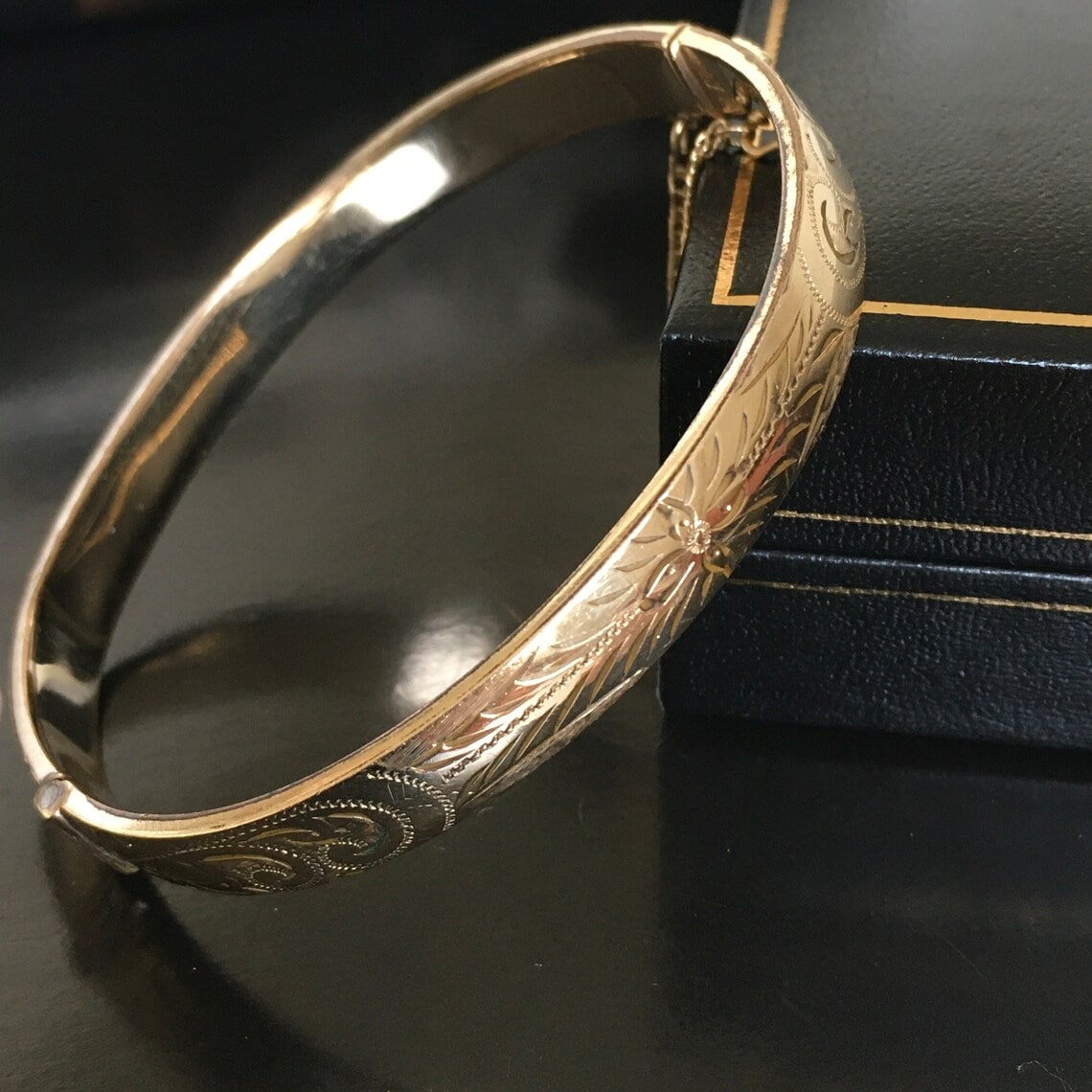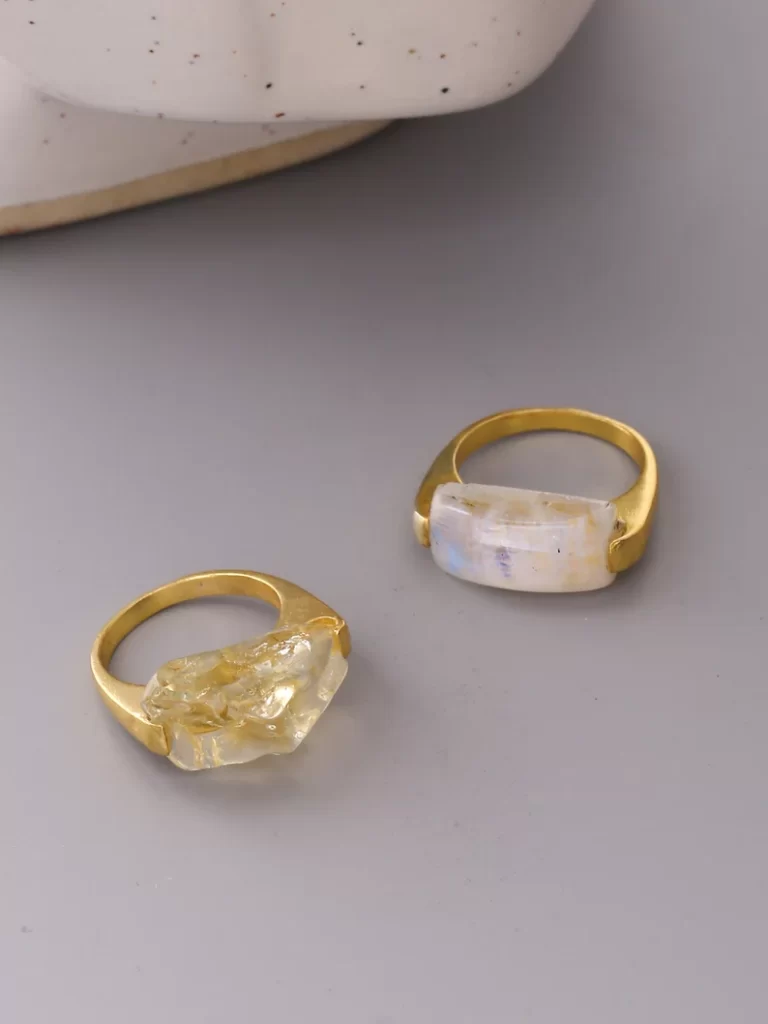
Table of Contents
Gold is among the most popular of precious metals used in the making of jewelry. However, as it is rare and expensive, there are many alternatives that give you the gold look without the hefty price tag.
One such alternative is rolled gold, also known as gold filled or gold overlay. Rolled gold is commonly used to make quality durable jewelry and provides an affordable alternative to solid gold.
But is it real gold and how much is it worth? Let’s take a look.
Origins of Rolled Gold

Rolled gold was first created in the 19th century in England where it became an affordable way to make costume jewelry. It allowed designers to create statement pieces that looked exactly like gold, but came at a fraction of the price. The quality was also much better than gold plating and the pieces lasted longer.
During the 1920s and 1930s, following the difficult economic conditions of the First World War and the Great Depression, the use of precious metals for jewelry declined, and alternatives like rolled gold rose in popularity.
What is Rolled Gold?
Rolled gold is made by fusing a base metal, usually silver, brass or copper, between thin sheets of gold. The metals are then bonded together using heat and rolled into flat sheets for use in jewelry.
In the United States, government regulation is quite strict with regards to the minimum amount of gold used in rolled gold jewelry. While there is no specific thickness for the layer of gold, the general rule is that the overall amount of gold used must be at least 5% of the total weight of the metal. In other words, the gold should be 1/20th of the total weight of the piece.
Unlike many other metals used in jewelry making, rolled gold jewelry is hypoallergenic, and generally doesn’t cause issues for those with metal allergies.
Rolled Gold Hallmarks
Gold jewelry should always come with a stamp that indicates its level of purity and how much gold has been used. The letters RG is used to specify that the metal is rolled gold. You will also come across RGP for Rolled Gold Plate.
If your piece of gold jewelry has a mark such as 1/20 18K RG this indicates that the item is of 1/20 rolled gold and is made of 18K gold.
Rolled Gold vs. Gold Plated

Gold plated jewelry is more commonly known than rolled gold. Gold plate is made by applying a very thin layer of gold onto the base metal, which is usually silver or copper. This can be done through chemical or electroplating processes.
Generally speaking, rolled gold has about 100 times more gold than gold plate jewelry. Gold plate uses very little solid gold in its composition. As a result, it is less durable and also cheaper than rolled gold.
Over time, the gold plating wears or flakes off, revealing the metal beneath. Rolled gold, on the other hand, does not wear off in this manner as it has a thicker layer of gold.
How Durable Is Rolled Gold?
The two main factors affecting the durability of rolled gold is the thickness and purity of the gold.
Rolled gold made of 10K or 14K gold is more durable and less susceptible to wear than pieces with higher karats. This is because gold is a very soft metal so the higher the purity the lower the durability.
In relation to the thickness of the gold, we mentioned that there is no specific standard regarding the thickness of the gold layer in rolled gold jewelry. Needless to say, the thicker the layer, the longer the piece will last.
In general, however, rolled gold is a durable option and doesn’t tarnish or discolor with time. Unlike gold plated items, rolled gold jewelry doesn’t easily flake or wear off. It is durable enough for daily use and can last many decades but over time the gold layer will wear off.
Is Rolled Gold Worth Anything?
Rolled gold is generally used for mid-range jewelry items and for pieces that you don’t expect to wear on a daily basis, like bridal rings. The value of a rolled gold piece depends on the gold content as well as the base metal used.
If you’re thinking of reselling rolled gold jewelry, you may be able to get some return on the pieces due to the higher gold content in them than gold plate.
Caring for Rolled Gold Jewelry
Rolled gold jewelry can last a very long time if taken reasonable care of. It is important not to expose your rolled gold jewelry to chemicals such as detergents, household cleaners, make-up and chlorine from swimming pools. Always remove the jewelry before such exposure.
When cleaning rolled gold items, use a soft cloth and warm soapy water. You can use a soft bristled brush to clean hard to reach places and intricate designs on your jewelry. Always rinse and dry thoroughly.
Store your rolled gold jewelry separately to minimize scratches and damage. You can use a jewelry polishing cloth, like this one, to buff your items every now and then and maintain its beautiful luster and golden gleam.
Wrapping Up
If you’re looking for a durable and affordable metal for jewelry, rolled gold ticks all the boxes. It’ll last for a long time and maintain its luster and shine. Always purchase from a reputable seller to ensure you’re not getting gold plated jewelry instead of rolled gold. Look for the hallmark that tells you what it is.









